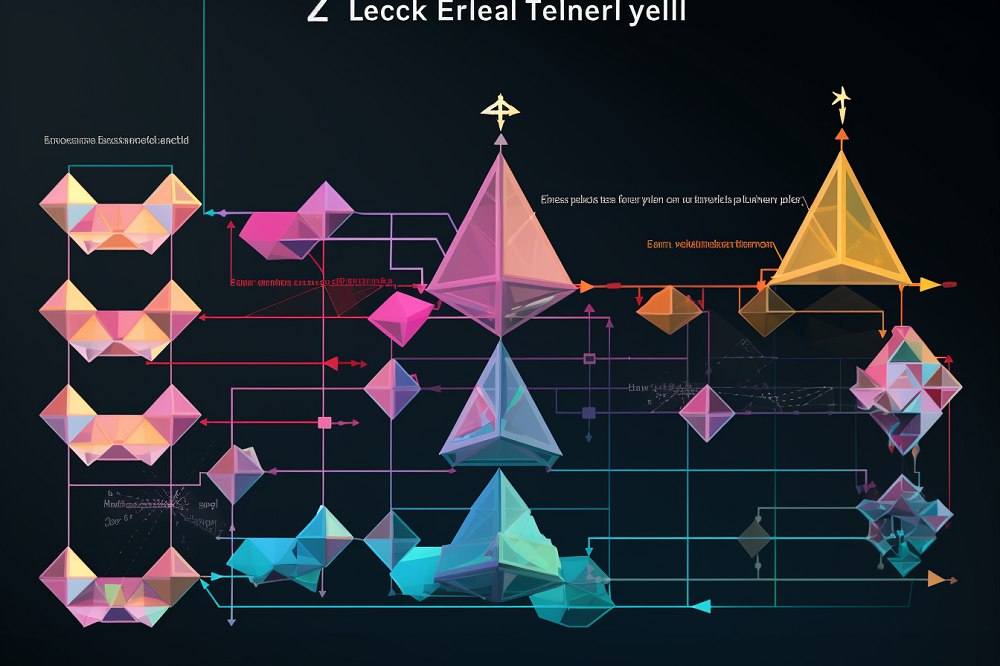In the early days of blockchain’s emergence through Bitcoin in 2009, the revolutionary technology created a promise of decentralized, secure transactions. However, as the ecosystem grows, this technology started experiencing scalability limitations within layer-1 blockchains like Bitcoin and Ethereum.
Thus, layer-2 solutions became the solution to these scalability limitations. This guide discusses the scalability challenges in Layer 1 solutions and how Layer 2 solutions are changing the crypto space.
Layer-1 Limitations And The Need For Scaling
The foundational layer-1 blockchains, exemplified by Bitcoin and Ethereum, encountered significant hurdles following the growth of their ecosystem.:
Scalability Predicament
At the heart of layer-1 blockchains is the PoW consensus mechanism, which is pivotal in ensuring security and consensus within the network. However, this mechanism resulted in scalability challenges. PoW, while robust in fostering security through computational puzzle-solving, proved resource-intensive, slowing down transaction speeds and limiting scalability.
The inherent design of layer-1 blockchains resulted in a trade-off between decentralization, security, and scalability, famously called the “scalability trilemma.”
Transaction Speeds And Fees
Layer-1 blockchains like Bitcoin and Ethereum faced the difficulty of slow transaction speeds and skyrocketing transaction fees during peak network activities. The constraint in transaction throughput directly affected user experience and impeded the network’s ability to scale effectively and meet user demands.
Consequences Of Low Scalability
The ramifications of scalability limitations were profound. The burgeoning user base and increased adoption of decentralized applications exacerbated network congestion, elevating transaction fees and hindering accessibility.
Moreover, this hindered the seamless integration of blockchain technology into diverse sectors, limiting its real-world applicability.
Layer-2 Blockchains: Solutions To Layer-1 Scaling Issues
Layer-2, or L2, blockchains like Ethereum’s Polygon or Bitcoin’s Lightning Network act as parallel networks facilitating many transactions off the mainnet. These secondary chains process and validate transactions before securely recording them onto the primary blockchain, ensuring immutability.
By alleviating the mainnet’s burden, L2 solutions significantly enhance transaction throughput, lower gas fees, and maintain crucial decentralized security. They streamline decentralized applications (DApps) while upholding the mainnet’s core principles of security and decentralization.
Ethereum Rollups: Optimistic Vs. Zero-Knowledge
Ethereum Rollups, an L2 scaling approach, consolidate multiple transactions into a single mainnet transaction, inheriting Ethereum’s security features. Optimistic Rollups and zero-knowledge Rollups (zk-Rollups) differ in their approach to recording transaction data on the layer-1 blockchain.
Optimistic Rollups prioritize speed and decentralization by storing transaction data on the mainnet, validating all transactions, and verifying potential faults afterward. Conversely, zk-Rollups leverage validity proofs to compute transactions off-chain, compressing multiple transactions before posting cryptographic proofs on the mainnet.
Diverse L2 Scaling Solutions
The quest for scalable blockchain solutions has birthed a diverse array of Layer-2 (L2) scaling mechanisms, each offering unique approaches to tackle the limitations of Layer-1 blockchains. These solutions, such as sidechains and state channels, aim to alleviate congestion, enhance transaction speeds, and mitigate soaring fees while preserving decentralization and security.
Sidechains: Parallel Ecosystems
Sidechains operate as independent blockchains running alongside the primary chain, connected via two-way bridges. They enable developers to deploy decentralized applications (DApps) on these parallel chains, resembling the mainnet but with separate consensus mechanisms.
State Channels: Off-Chain Transactions
State channels, synonymous with payment channels, facilitate off-chain transactions by locking crypto funds within smart contracts on the mainnet. Users transact among themselves off-chain, generating signed tickets stored on the mainnet.
Once concluded, the final data gets recorded back to the primary blockchain. Notable examples include the Lightning Network for Bitcoin and the Raiden Network for Ethereum.
Plasma Chains: Anchored Offshoots
Plasma chains, tethered to the Layer-1 blockchain, employ fraud proofs similar to Optimistic Rollups. These chains excel in high-speed transactions with lower fees, especially between arbitrary users.
However, withdrawals from plasma chains might involve lengthy arbitration periods and additional capital costs, particularly for liquidity in fungible assets.
Validiums: Near-Zero Delay, High Cost
Validiums, akin to zero-knowledge rollups, offer speedy withdrawals without delays, as seen in other solutions. However, these systems necessitate significant computational power, rendering them less cost-effective, especially for low-throughput use cases.
Future Prospects
As long as the blockchain domain evolves, L2 scaling solutions will remain pivotal. The multichain paradigm, enabled by L2 solutions’ interoperability, heralds a new era of decentralized finance (DeFi) applications and fosters a collaborative ecosystem.
However, ensuring the sustenance of security, decentralization, and scalability principles remains paramount in this transformative journey towards a decentralized economy.
